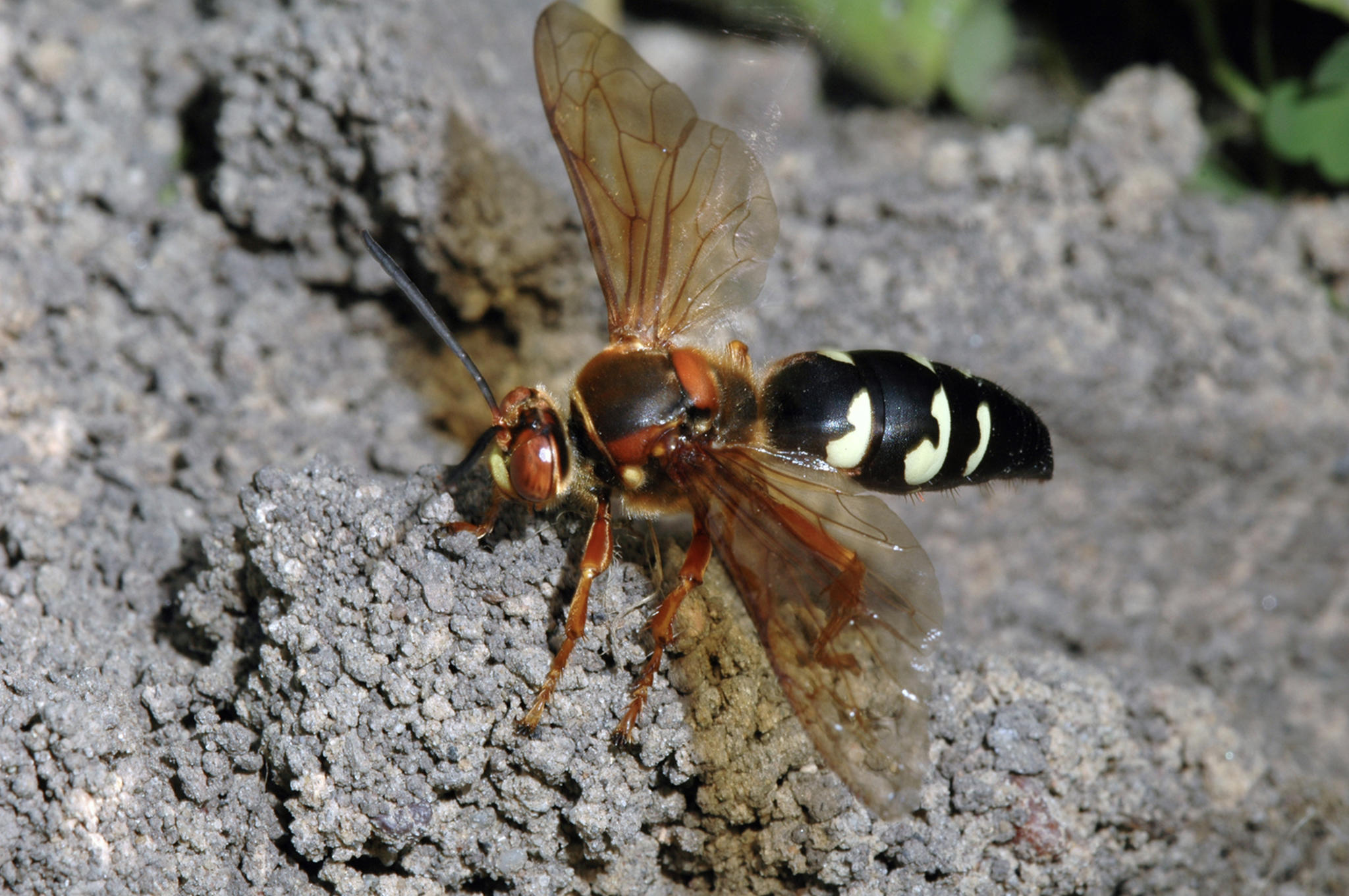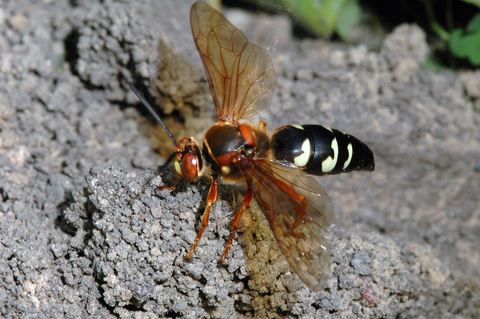Your "murder hornet" might be a cicada killer
Cicada killer on top of a cicada
With news of “murder hornets” in the U.S., Minnesotans have been wary of large wasp-like insects flying around. Murder hornets have not been found in Minnesota, but there are some native insects that may seem similar, such as the elm sawfly and the cicada killer.
The cicada killer (Sphecius speciosus) is a ground-nesting, solitary wasp, native to the U.S. and, true to their common name, hunt and capture cicadas.
Cicadas create the loud, familiar buzzing you hear in the dog days of summer. Female wasps catch and sting cicadas to paralyze them. They then haul these large insects to their burrows and place them underground along with their eggs. The larvae hatch and feed on the paralyzed cicada, developing into adults. The new adult wasps emerge from their burrows the following summer and look for mates.
How to identify them
- Cicada killers are large, about 1½ inches long
- They have a black abdomen with yellow bands
- Black and reddish-brown thorax (middle section of body, between the head and abdomen)
- Amber-colored wings
- Reddish brown legs
Cicada killer adults are active in July and August.
Are they dangerous?
Though these insects may look intimidating, they are not dangerous. Females ignore people and don’t instinctively protect their nest. They can sting but only do so if threatened. Males are aggressive but have no stinger. There is very little risk of getting stung . . . unless you’re a cicada!
Where are they found?
- They nest in well-drained soil exposed to full sun, often creating large mounds of dirt.
- They can be found in lawns or gardens, and may be quite numerous in relatively small areas.
- There’s only one wasp per burrow, but there are usually many burrows near each other.
- Their tunneling won’t kill your lawn, and they don't harm turf.
What should I do if I have them?
If cicada killers are nesting in your lawn, you can ignore them. They will go away at the end of summer.
If you are not able to tolerate them, the other option is to treat the nests.
- Apply an insecticide into each individual nest entrance.
- Dusts are most effective, but sprays can help decrease the numbers.
- Be sure the product is labelled for use on turf. Effective active ingredients include permethrin and carbaryl.

